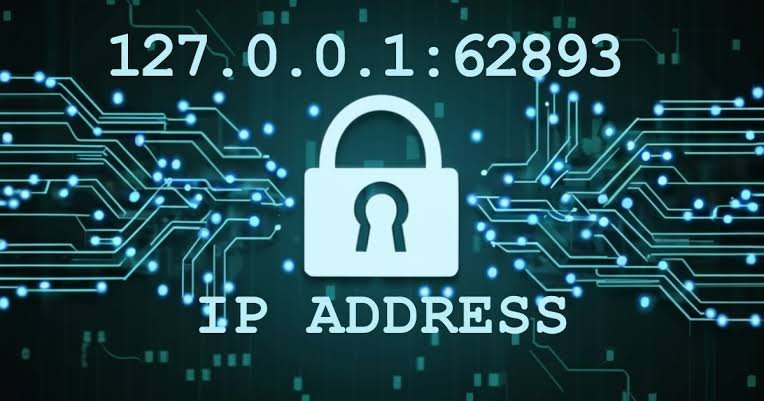What Is 127.0.0.1:62893 By Techgues.com?
In the expansive realm of networking, IP addresses and port numbers are essential for enabling communication between devices. One such address, “127.0.0.1:62893,” might seem like just another string of numbers to the untrained eye. However, this specific combination is significant in the realms of local networking and development. This article by Techgues.com will unravel the intricacies of 127.0.0.1:62893, providing you with a deep understanding of its meaning, usage, and importance.
The Basics: What is 127.0.0.1?
Before we delve into the specific port number, it’s essential to understand the foundation: the IP address 127.0.0.1. This address is known as the loopback address in computer networking.
Loopback Address Explained
- Definition: The loopback address (127.0.0.1) is a special IP address that is used by a computer to refer to itself. It’s a reserved IP address used for internal testing and communication within the same machine.
- Purpose: The primary purpose of the loopback address is to allow a machine to send data to itself. This is particularly useful for testing purposes, where a developer or system administrator might need to check if the network stack on their local machine is functioning correctly.
- How It Works: When you ping 127.0.0.1, the data packet never leaves your computer. Instead, it is processed internally by the network stack, and the response is sent back as if it had been sent and received from another device. This process helps in testing network software without requiring an external network.
Introduction to Port Numbers
To understand 127.0.0.1:62893 fully, we need to break down the concept of port numbers in networking.
What is a Port Number?
Definition:
A port number is a 16-bit numerical identifier used to distinguish specific applications or services running on a device within a network. It works alongside an IP address to ensure that data reaches the intended destination on the correct system.
Range:
Port numbers span from 0 to 65,535 and are divided into three categories:
- Well-known ports (0–1023)
- Registered ports (1024–49151)
- Dynamic/Private ports (49152–65535)
Functionality:
When information travels across the internet, it is routed using both an IP address and a port number. This pairing allows network traffic to be directed precisely to the appropriate service or application on the receiving device.
Decoding 127.0.0.1:62893: What Does It Mean?
Now that we’ve covered the basics, let’s break down what 127.0.0.1:62893 represents.
The IP Address: 127.0.0.1
As previously mentioned, 127.0.0.1 is the loopback address. When you use this address, you’re essentially instructing the computer to communicate with itself. This is particularly useful in various scenarios, especially in software development and testing.
The Port Number: 62893
The port number 62893 is a dynamic/private port. It falls within the range of 49152-65535, which means it is not a well-known or registered port but is dynamically assigned, often by the operating system, for short-lived or temporary connections.
Combining the Two: 127.0.0.1:62893
When you see 127.0.0.1:62893, it means that an application on your computer is communicating with itself over the loopback address using port 62893. This specific combination is often seen during software development when developers are running local servers, testing web applications, or debugging services.
Uses of 127.0.0.1:62893 in Practice
Development Environments on Local Machines
A common use of 127.0.0.1:62893 is in local development environments. Developers often run web servers, databases, or other services on their local machines using the loopback address and a specific port number.
For instance:
- Web Servers: A developer might run a web server on their machine, accessible via 127.0.0.1:62893. This allows them to develop and test web applications locally before deploying them to a live environment.
- Database Servers: Similarly, databases can be run locally and accessed through a port like 62893. This setup is crucial for testing database queries and connections without affecting live data.
Debugging and Testing
Using 127.0.0.1:62893 for debugging and testing is a standard practice among developers. This address allows them to simulate network conditions and test the behavior of applications in a controlled environment.
- Testing APIs: Developers can test their API endpoints locally using 127.0.0.1:62893. By running the API server on the loopback address, they can send requests and receive responses as if they were interacting with an external server, all while keeping the process contained within their own machine.
- Application Debugging: When debugging an application that relies on network communication, using 127.0.0.1:62893 enables developers to isolate and troubleshoot issues without the complexities of an external network.
Security Considerations
While 127.0.0.1:62893 is primarily used in local development, it’s important to consider security implications.
Securing Local Servers
When running local servers on 127.0.0.1:62893, it’s essential to ensure that they are not inadvertently exposed to external networks. Although the loopback address is intended for internal communication only, misconfigurations could potentially expose these services to external threats.
- Firewall Configuration: Ensure that your firewall settings are configured to block any external access to local services running on 127.0.0.1:62893. This prevents unauthorized access and keeps your development environment secure.
- Access Control: Implement access controls to restrict who can interact with services running on 127.0.0.1:62893. This is especially important in environments where multiple users share the same machine.
Preventing Port Conflicts
When assigning port numbers like 62893, it’s important to avoid conflicts with other services. Port conflicts can lead to unexpected behavior, crashes, or security vulnerabilities.
- Port Scanning: Regularly scan your system for open ports to ensure that 62893 is not being used by another service. This practice helps prevent conflicts and ensures the stability of your development environment.
- Dynamic Port Allocation: Consider using dynamic port allocation strategies to avoid hard-coding port numbers in your applications. This approach reduces the risk of conflicts and makes your applications more flexible.
Troubleshooting Issues with 127.0.0.1:62893
Despite its utility, working with 127.0.0.1:62893 can sometimes lead to issues, particularly if configurations are not set up correctly. Here are some common issues and their solutions:
Problem: Unable to Connect to 127.0.0.1:62893
- Cause: The service running on port 62893 might not be started, or the port might be blocked by the firewall.
- Solution: Ensure that the service is running and that the port is open. You can use tools like netstat or lsof to check if the port is in use and which service is using it.
Problem: Port Conflict with Another Service
- Cause: Another application might be using port 62893, causing a conflict.
- Solution: Identify the conflicting service using netstat or similar tools and either stop that service or change the port number for your application.
Problem: Security Concerns
- Cause: Unsecured local servers running on 127.0.0.1:62893 could be vulnerable to attacks if exposed.
- Solution: Implement proper security measures such as firewalls, access controls, and encryption to protect your local services.
Verdict On 127.0.0.1:62893 By TechGues
127.0.0.1:62893 is more than just a random combination of numbers; it represents a fundamental aspect of networking in development environments. Whether you’re running local servers, testing APIs, or debugging applications, this loopback address and port number combination is an essential tool in a developer’s toolkit.
Understanding how 127.0.0.1:62893 works, its applications, and the security considerations surrounding it is crucial for anyone involved in software development or network administration. At Techgues.com, we believe that mastering these foundational concepts will empower you to create more robust, secure, and efficient applications.
So, the next time you encounter 127.0.0.1:62893, remember the depth of its utility and the importance it holds in the digital world.





